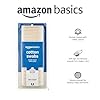An aortic aneurysm is a ballooning of the aorta. It starts straight from the heart. The most prominent artery that comes from the heart. It is the main pipeline for the whole body. The aneurysm can form in the chest (thoracic) and/or the abdomen.
Abdominal aortic aneurysms (AAA or Triple-A) are present in 3.9% to 7.2% in men and 1.0% to 1.3% in women.
Many famous people have died from aortic aneurysms. Albert Einstein, Lucille Ball, George C. Scott, and John Ritter are a few. Untreated, a ruptured aneurysm has a mortality rate of 75 to 90%!
Cause of Aortic Aneurysms
Aortic aneurysms can be caused by atherosclerosis, hypertension, diseases like syphilis, and trauma. Smoking is a significant contributor. Usually, abdominal aortic aneurysms (AAA) just lie in wait until they rupture, and immediate death happens if surgery is not done. Not all hospitals are equipped to do aortic surgery, and a vascular surgeon is needed.

An astute physician may be able to feel a pulsating mass just under the rib cage of a skinny patient, which may prompt an abdominal ultrasound to verify the presence of the AAA. Sometimes a bulge on top of the heart on a chest x-ray may give a clue to the presence of an aortic aneurysm in the chest, but it is impossible to detect it by physical exam.
In my experience in the emergency room, leaking Triple-As have presented and mimic other diseases like stroke, heart attack, kidney stones, abdominal infection, passing out, and severe back pain. Once an aneurysm is leaking, a vascular surgeon should be called immediately. According to Columbia surgery, the national mortality rate for an emergency aortic surgery is 13%, while elective surgery is lower at 3%. Big difference. That is why early detection is critical.
Early Detection of Abdominal Aortic Aneurysms
The United States Preventive Services Task Force (USPSTF) has given the final recommendation on who should be screened for Triple-As. When to test and how to screen. They also included the grades of advice.

The explanation of the USPSTF Grades of Recommendation are described below:

The American College of Cardiology/American Heart Association (ACC/AHA 2013) also recommends screening for AAA in:
- men 65-75 years old with a history of smoking,
- men >60 years of age if they had a sibling or parent with AAA.
People who are very tall and may have Marfan Syndrome are also prone to develop Triple-As and should also be screened.
Thoracic Aortic Aneurysms
As of yet, no screening guidelines have been published for aortic aneurysms in the chest. Usually, they are detected in chest x-rays (CXR) that are ordered for some other reasons. If the CXR looks suspicious, more detail can be seen by CT scan, Echocardiogram, or MRI of the chest for measurement and surveillance. More detail from the Mayo Clinic.
Take Away Messages
- Triple-As can kill.
- Don’t smoke if you do not want a triple-A and other diseases.
- Men ages 65 to 75 who have ever smoked should have screening. Why only up to 75 years old? Because the screening result is suitable for 15 years.
- A healthy diet that is low in carbohydrates, rich in vegetables and plenty of exercise can prevent many risk factors for the development of aortic aneurysms.
Don’t Get Sick!
Thanks for reading. Feel free to share and like on FaceBook.
Further Reading:
- The Deadliest Diseases Associated with Metabolic Syndrome
- Atrial Fibrillation and Metabolic Syndrome
- How Effective are Drugs that Increase HDL?
- Can You Be in Heart Failure Now?
- What Starts Atherosclerosis?
- The Magical Endothelium
- How Does Diabetes Destroy Arteries
- How Diabetes Destroys the Body
- Understanding Heart Failure Treatment
- Coronary Stents and Blood Thinners
- How Effective is Quitting Cigarettes?
- Hair Loss and Heart Attacks
- The Real Effect of Statins on Heart Disease
- LDL: “Bad Cholesterol” is Not All Bad.
Sources:
- Bird AN, Davis AM. Screening for an abdominal aortic aneurysm. JAMA 2015;313:1156-7.
- LeFevre ML. U.S. Preventive Services Task Force. Screening for abdominal aortic aneurysm: U.S. Preventive Services Task Force recommendation statement. Ann Intern Med 2014;161:281-90.
- ACC/AHA 2013
Image Credits:
- Aortic Aneurysm By en: National Institutes of Health – http://www.nhlbi.nih.gov/health/health-topics/topics/arm/types.html, Public Domain, https://commons.wikimedia.org/w/index.php?curid=12180868
- AA Screening Guidelines and Grades of Recommendation from USPSTF
© 2019 Asclepiades Medicine, LLC All Rights Reserved
DrJesseSantiano.com does not provide medical advice, diagnosis or treatment
“As an Amazon Associate, I earn from qualifying purchases.”



























